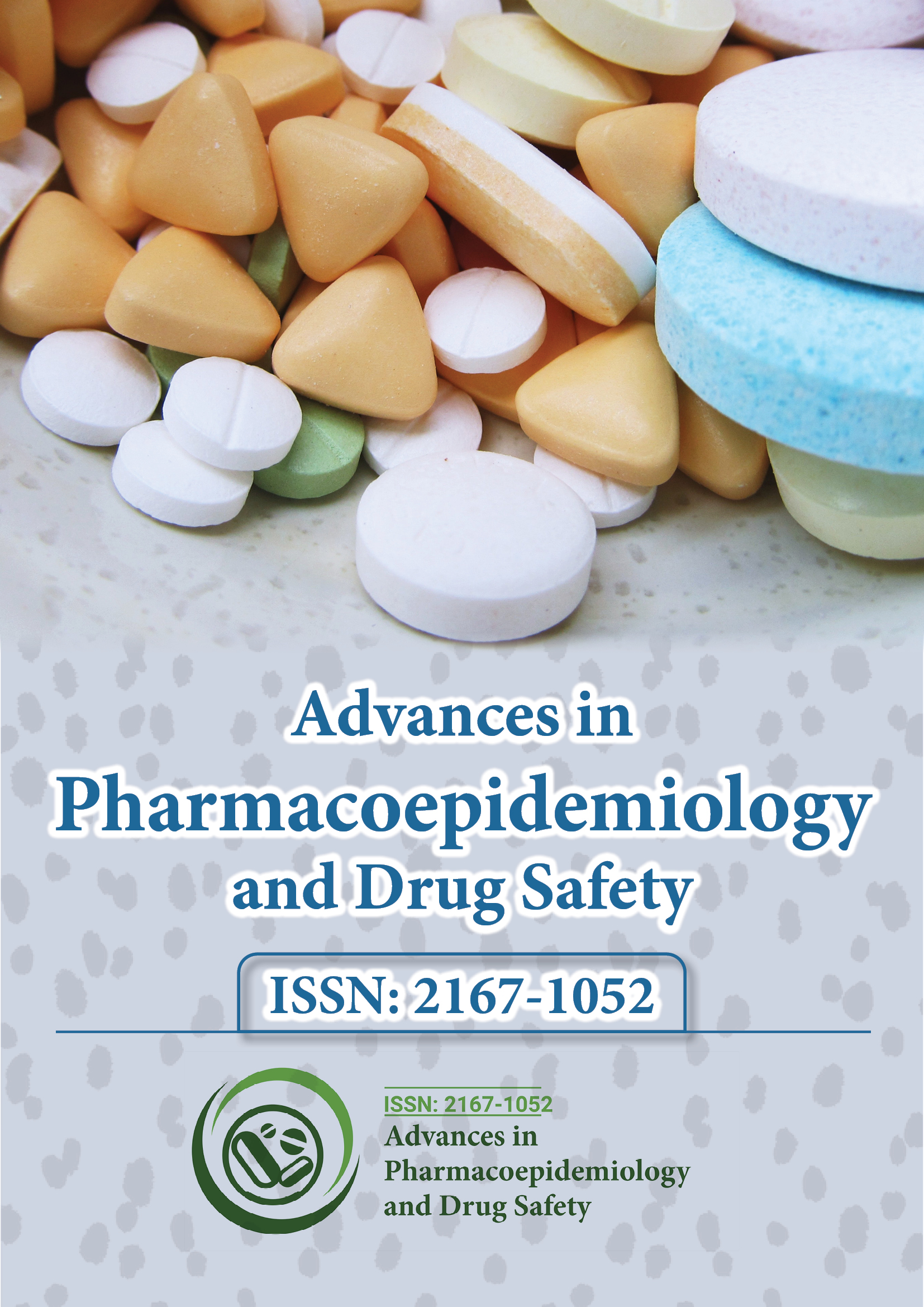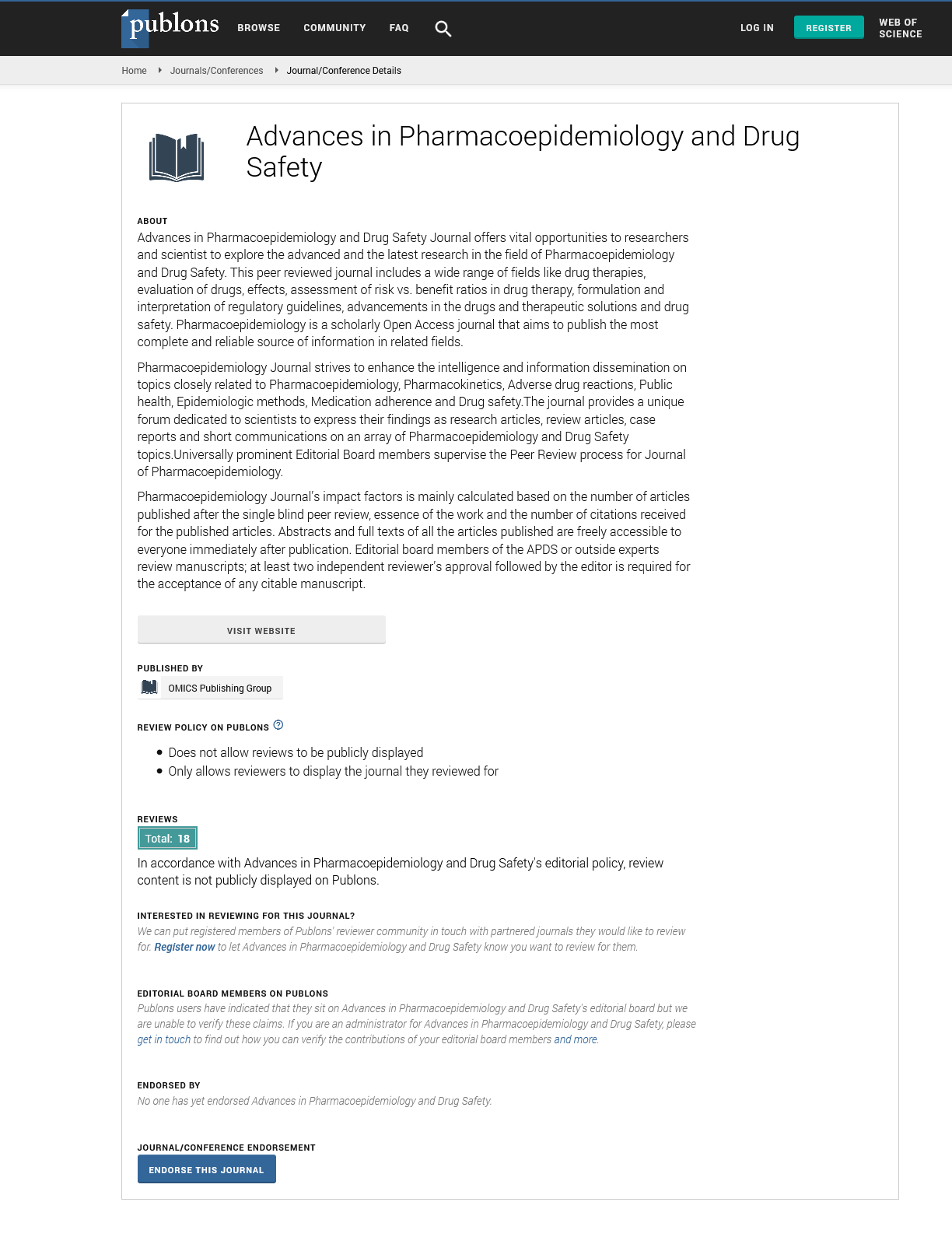Indexed In
- Open J Gate
- Genamics JournalSeek
- Academic Keys
- JournalTOCs
- RefSeek
- Hamdard University
- EBSCO A-Z
- SWB online catalog
- Publons
- Geneva Foundation for Medical Education and Research
- Euro Pub
- Google Scholar
Useful Links
Share This Page
Journal Flyer

Open Access Journals
- Agri and Aquaculture
- Biochemistry
- Bioinformatics & Systems Biology
- Business & Management
- Chemistry
- Clinical Sciences
- Engineering
- Food & Nutrition
- General Science
- Genetics & Molecular Biology
- Immunology & Microbiology
- Medical Sciences
- Neuroscience & Psychology
- Nursing & Health Care
- Pharmaceutical Sciences
Short Communication - (2025) Volume 14, Issue 1
Reflexive Drug Testing Enhances Diagnostic Accuracy and Resource Efficiency
Lucas van Dijk*Received: 19-Feb-2025, Manuscript No. PDS-25-28720; Editor assigned: 21-Feb-2025, Pre QC No. PDS-25-28720 (PQ); Reviewed: 07-Mar-2025, QC No. PDS-25-28720; Revised: 14-Mar-2025, Manuscript No. PDS-25-28720 (R); Published: 21-Mar-2025, DOI: 10.35250/2167-1052.25.14.382
Description
Reflexive drug testing refers to a strategic, stepwise approach wherein initial test results determine the need for additional testing. Rather than ordering comprehensive panels at the outset, clinicians and laboratories can depend on predefined algorithms that automatically trigger further analysis based on initial findings. This method helps streamline workflows, conserve resources and enhance the clinical relevance of test results [1].
The traditional approach to drug testing often involves comprehensive panels that include a wide array of substances, many of which may not be clinically indicated. This can lead to over-testing, increased healthcare costs and the potential for misinterpretation of results due to incidental findings or false positives [2]. In contrast, reflexive drug testing allows for targeted analysis. For example, a positive immunoassay screen for opioids may automatically trigger confirmatory testing by mass spectrometry to identify specific compounds such as morphine, codeine, or oxycodone, while negative screens would not prompt further evaluation [3].
One of the most significant advantages of reflexive strategies lies in resource optimization. By limiting the number of confirmatory tests to only those cases with abnormal or borderline results, laboratories can reduce reagent usage, equipment workload and personnel time. Additionally, it can improve turnaround times for critical cases, as fewer unnecessary tests mean faster processing for those that truly require detailed analysis.
Clinical interpretation also benefits from reflexive testing. Initial screening methods, such as enzyme immunoassays, can produce false positives due to cross-reactivity with non-target substances [4]. Confirmatory testing helps validate these results, ensuring that therapeutic decisions are based on accurate and specific data. Moreover, reflexive testing can be customized to the clinical context. For example, in a pain management clinic, testing can be customized to detect compliance with prescribed medications while identifying potential misuse or diversion [5].
Implementing reflexive drug testing requires collaboration between clinicians, laboratory professionals and informatics teams. Decision trees or algorithms must be designed based on clinical guidelines, test performance characteristics and institutional needs. These protocols should be embedded into the laboratory information system to enable automatic reflex actions. Additionally, communication with healthcare providers is essential to ensure understanding of when and why reflex testing occurs, thereby aligning expectations and improving patient care [6, 7].
In psychiatric and emergency settings, reflexive testing is especially valuable. Patients may be unable to provide reliable histories, making objective drug testing critical. A tiered approach enables rapid screening for commonly abused substances, with follow-up testing only when warranted. This targeted methodology supports rapid clinical decision-making without overwhelming laboratory operations.
Cost-effectiveness analyses have shown that reflexive testing can significantly reduce healthcare expenditures [8]. By avoiding unnecessary confirmatory tests in negative cases and focusing resources where they are most needed, institutions can achieve better financial outcomes without compromising diagnostic quality. Additionally, because this approach minimizes the reporting of incidental findings, it can reduce patient anxiety and prevent unnecessary interventions.
Despite these benefits, reflexive drug testing does face certain challenges. Designing strong reflex pathways requires ongoing evaluation of clinical outcomes, test performance and emerging drug trends. Laboratory staff must remain vigilant about updates in drug formulations and street drug analogues that could influence assay performance. Furthermore, integrating reflexive strategies into electronic health records and laboratory systems demands initial investment and interdisciplinary coordination [9].
Nevertheless, as precision medicine continues to evolve, the need for efficient and clinically meaningful diagnostic tools becomes most important. Reflexive drug testing aligns well with these goals by promoting personalized, evidence-based care. By reducing unnecessary testing and ensuring accurate interpretation, this approach can support better patient outcomes and more efficient use of healthcare resources [10].
In conclusion, reflexive drug testing strategies represent a forward-thinking approach in clinical toxicology and laboratory medicine. They provide a pragmatic solution to the dual challenges of diagnostic accuracy and cost containment. By controlling technology, clinical algorithms and collaborative protocols, healthcare institutions can optimize drug testing practices in a way that benefits patients, clinicians and the healthcare system at large.
References
- Pape A, Hoofnagle AN, Liao HC. Reflexive drug testing strategies for efficient utilization of resources and better interpretation. Clinics in Laboratory Medicine. 2025.
- Walewska-Zielecka B, Religioni U, SoszyÅ?ski P, Wojtkowski K. Evidence-based care reduces unnecessary medical procedures and healthcare costs in the outpatient setting. Value Health Reg Issues. 2021;25:23-8.
[Crossref] [Google Scholar] [PubMed]
- Umukoro NN, Aruldhas BW, Rossos R. Pharmacogenomics of oxycodone: A narrative literature review. Pharmacogenomics. 2021;22(5):275-90.
[Crossref] [Google Scholar] [PubMed]
- Grange RD, Thompson JP, Lambert DG. Radioimmunoassay, enzyme and non-enzyme-based immunoassays. Br J Anaesth. 2014;112(2):213-6.
[Crossref] [Google Scholar] [PubMed]
- Avrameas S. Enzyme immunoassays and related techniques: Development and limitations. Curr Top Microbiol Immunol. 1983;140:93-9.
[Crossref] [Google Scholar] [PubMed]
- Sinclair S, Raffin-Bouchal S, Venturato L, Mijovic-Kondejewski J, Smith-MacDonald L. Compassion fatigue: A meta-narrative review of the healthcare literature. Int J Nurs Stud. 2017;69:9-24.
[Crossref] [Google Scholar] [PubMed]
- Busch IM, Moretti F, Travaini G, Wu AW, Rimondini M. Humanization of care: Key elements identified by patients, caregivers, and healthcare providers. A systematic review. Patient. 2019;12:461-74.
[Crossref] [Google Scholar] [PubMed]
- Ahid S. Impact of out-of-pocket costs on catastrophic healthcare expenditures. Value in Health Regional Issues. 2022;30:170-1.
[Crossref] [Google Scholar] [PubMed]
- Thomas BF, Pollard GT, Grabenauer M. Analytical surveillance of emerging drugs of abuse and drug formulations. Life Sci. 2013;92(8-9):512-9.
[Crossref] [Google Scholar] [PubMed]
- Ramaswami R, Bayer R, Galea S. Precision medicine from a public health perspective. Annu Rev Public Health. 2018;39(1):153-68.
[Crossref] [Google Scholar] [PubMed]
Citation: van Dijk L (2025). Reflexive Drug Testing Enhances Diagnostic Accuracy and Resource Efficiency. Adv Pharmacoepidemiol Drug Saf. 14:382.
Copyright: © 2025 van Dijk L. This is an open access article distributed under the terms of the Creative Commons Attribution License, which permits unrestricted use, distribution, and reproduction in any medium, provided the original author and source are credited.

